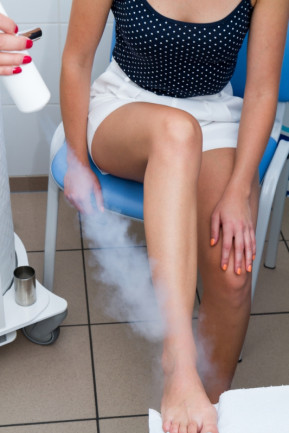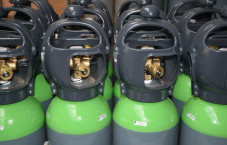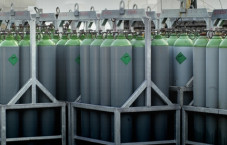Cryotherapy

Cryotherapy and cryosurgery and cryopreservation are three medical processes in which liquid nitrogen is used.
Application scope
It is important to make a distinction between cryotherapy and cryosurgery and cryopreservation.
Cryotherapy (excluding the dermatology) is used to combat physical complaints by cooling (without freezing). When treating certain rheumatic diseases, a very cold atmosphere is created by evaporation of liquid nitrogen in a closed space for local cold-air applications or cold-air-applications for the entire body.
In dermatological cryosurgery, liquid nitrogen is used for the targeted destruction of diseased tissues. By freezing, there is damage to the tissues which leads to ignition, followed by blistering and eventually death (necrosis). The wound must then heal spontaneously.
Cryopreservation is a technique to preserve living tissue by the cooling of it. When tissues are immersed in liquid nitrogen, the extremely low temperature ensures a significant reduction in the rate of chemical and biological processes in the sense that even the biochemical reactions that lead to cell death will be stopped.
During the freezing process, the formation of ice crystals must be avoided, because this may damage the frozen tissue. To avoid tissue damage during cooling or when thawing, one can cool or warm up the sample very slowly (e.g. 1° C per minute in a refrigerator). A different technique is the vitrification or the 'glazing' of the aqueous components of the tissue by cooling down the sample very quickly (e.g. by immersion).
Requirements
With the three processes described liquid nitrogen is used.
In cryosurgery, either with a watt bar or with a specially designed spray device (cryo probe), liquid nitrogen is introduced on the tissues to be treated. The water in the cells freezes as soon as they are cooled to a temperature between minus 5 and minus 10 °C. There are also closed-probe systems where liquid nitrogen is led through a metal probe that is placed on the skin.
- A watt-rod will cause freezing by direct contact of the tissues with the liquid nitrogen.
- In the event of use of a cryogenic probe the cells become cold because the liquid nitrogen extracts heat from the underlying tissues during evaporation.
In the event of cryopreservation liquid nitrogen is added to the cryogenic protectors, such as dimethyl sulfoxide (toxic in high concentration) or polyols such as glycerol. These cryogenic protectors are used to prevent freeze damage to the tissues.
Advantages
- Liquid Nitrogen (with a temperature of minus 196° C) has a low price. Even when large amounts are required such as with cryotherapy, this remains affordable.
- Cryosurgery is cheaper, easier and safer than ordinary surgery. It also gives good cosmetic results, with minimal scar formation.
- Because nitrogen is not toxic, tastes neutral and is chemically inert, it offers the best conditions for cryopreservation of cells and biological tissue.
IJsfabriek Strombeek provides liquid nitrogen for all of these applications and in various forms of delivery.
Delivery forms


